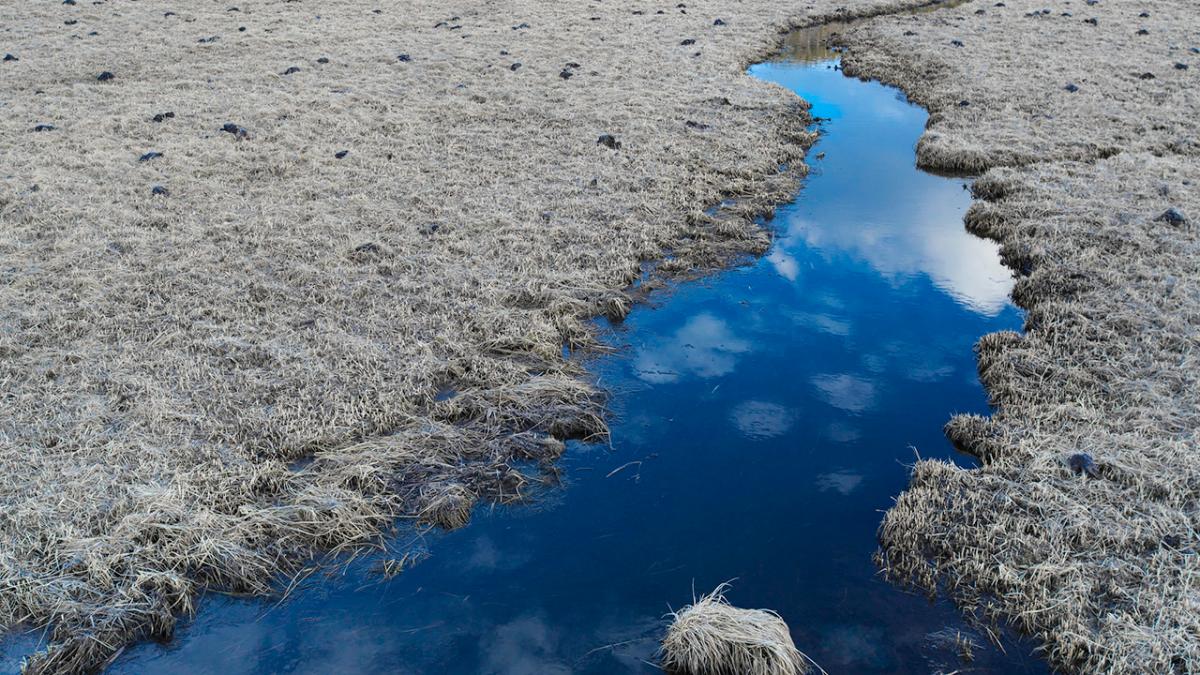Frost at Blacktail Pond, Yellowstone National Park (Neal Herbert, NPS — Flickr/Public Domain).
Climate Executive Order.
On Jan. 27, President Biden signed his climate action executive order, pledging, among other things, to conserve at least 30% of U.S. land and water by 2030. On May 6, an interagency report to the president provided some detail for implementing the 30x30 plan. For farmers and ranchers, the most important of the report’s eight core principles is the pledge to honor private property rights and honor existing voluntary stewardship efforts of private landowners and fishers, as well as building on existing land and water conservation programs. In assessing where the U.S. stands in current land and water conservation activities, baseline assessment in the proposed American Conservation and Stewardship Atlas will include contributions of farmers, ranchers, forest owners and private landowners through effective and voluntary conservation measures.
Conserving & Restoring America the Beautiful Report.
Six early actions identified in the May report include: (1) creating more parks & safe outdoor opportunities in nature-deprived communities; (2) supporting tribal conservation priorities; (3) expanding collaborative fish and wildlife habitat and corridor conservation efforts; (4) increasing voluntary public access for outdoor recreation; (5) incentivizing and rewarding voluntary conservation efforts of fishers, ranchers, farmers and forest owners; and (6) creating the civilian climate corps to help restore public lands and waters. The report indicated that 12% of U.S. land is permanently protected for conservation purposes, well short of the 30x30 goal.
Where do the numbers come from?
There are about 2 trillion acres in the U.S. Thirty percent of this equals 729 million acres. And 12%, or 292 million acres, are already permanently protected according to the U.S. Geological Survey. So, 18%, or 437 million additional acres, would need to be protected in order to reach the 30x30 goal.
According to federal and private reports, the 12% that is permanently protected appears to be permanently protected federal lands. However, according to the same reports, just under 18% of total US land include permanently protected land held by state and local governments, private entities and tribes. How much of this non-federal 18% can be counted towards meeting the 30x30 goal should be clarified in preparing the baseline conservation assessment for the proposed Conservation and Stewardship Atlas. A 2009 federal report indicates that the total of permanently protected public and private lands totals 715 million acres. If lands subject to long-term conservation easements are included, the total rises to over 770 million acres. This would exceed the 30% land figure. The baseline analysis however might identify additional land conservation needs.
What about agriculture?
Agriculture is the largest U.S. land use, and a potential source of land to be conserved under the 30x30 program. Cropland is around 380 million acres; pasture is over 650 million acres; and forests cover over 600 million acres. It is easy to imagine new or modified USDA conservation programs similar to the current Conservation Reserve Program where owners of grazing land or forests are offered long term contracts to conserve pasture and forests. These programs could be targeted to accomplish special land conservation needs identified in the Conservation & Stewardship Atlas baseline assessment. It appears, however, that the minimum land conservation goals of the 30x30 program could be met without additional agricultural land being put into conservation uses.
Depending on how much additional agricultural land might be identified for protection, significant grazing lands and forest lands would appear to be potentially available for long-term conservation so long as livestock grazing and timber harvesting could continue to be practiced. Cropland could also be voluntarily taken out of production and put into long term conservation reserve program contracts to help reach 30x30 objectives.
Competing Climate Priorities
Recall that the 30x30 plan is part of President Biden’s government-wide climate plan. Full implementation of the 30x30 plan would require full funding of the president’s budget. In my personal opinion, the president’s budget is unlikely to be fully funded – it rarely is except perhaps in times of war. So, the president and his advisors will need to pick among many competing climate programs to fit within the federal budget. I suspect that some programs, like developing more renewable energy and expanding the national electricity grid, would have a greater impact on achieving U.S. carbon neutrality by 2050 than the 30x30 program. I do expect creating additional urban parks will be a high 30x30 priority for the president and will be funded in any event at some level. Agricultural land conservation could be pursued through a future USDA carbon bank.
Much remains unclear at this point. More clarity should be provided if the Conservation & Stewardship Atlas project is approved and funded, and the Atlas baseline assessment completed.
References
Defenders of Wildlife, “Getting to 30x30:Guidelines for Decision-Makers.” https://defenders.org/sites/default/files/2020-07/getting-to-30x30-guidelines-for-decision-makers.pdf Essential reading.
U.S. Geological Survey. A Map for the Future: Creating the Next Generation of Protected Area Inventories in the United States. July 2006. http://www.protectedlands.net/wp-content/uploads/2018/10/PADUS_FinalJuly2009LowRes.pdf Essential reading.
Conserving and Restoring America the Beautiful. 2021. https://www.doi.gov/sites/doi.gov/files/report-conserving-and-restoring-america-the-beautiful-2021.pdf Preliminary interagency report on how to pursue 30x30 program objectives.


